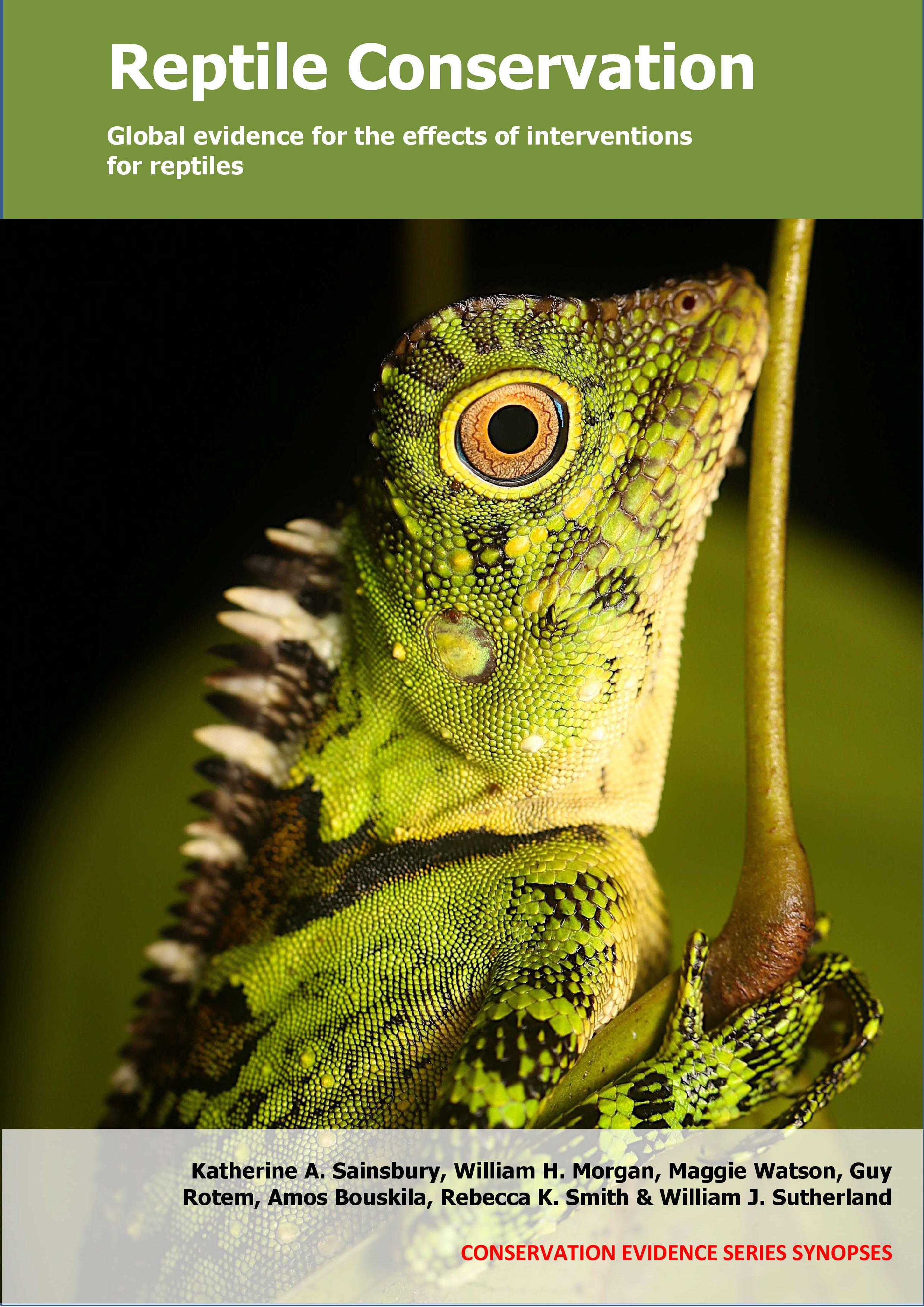Install escape devices on fishing gear: Snakes & lizards
-
Overall effectiveness category Awaiting assessment
-
Number of studies: 3
View assessment score
Hide assessment score
How is the evidence assessed?
-
Effectiveness
not assessed -
Certainty
not assessed -
Harms
not assessed
Study locations
Supporting evidence from individual studies
A randomized, paired, controlled study in 1995 in seabed areas in the Gulf of Carpentaria, northern Australia (Brewer et al. 1998) found that trawl nets fitted with one of seven escape zone designs (“bycatch reduction devices”) caught similar numbers of sea snakes compared to unmodified nets. No statistical tests were carried out. Nets fitted with escape zones caught sea snakes at a similar rate as unmodified nets (escape zones: 0.5 snakes/tow, 7 individuals; unmodified: 0.4 snakes/tow, 15 individuals). The unwanted catch included three species of snakes. The effect of escape zones on the commercially targeted prawn catch varied by design (see original paper for details). Escape zone designs tested included ‘fisheye’, ‘radial escape section’, ‘square mesh window’ and square mesh windows fitted with a number of modifications (see original paper for details). Vessels towed twin Florida Flyer prawn trawl nets from each side of the vessel in scientific trials of one-month duration (sea snakes: October 1995). Nets fitted with one of the designs of escape zone and an unmodified net were randomly assigned to either side of the vessel.
Study and other actions testedA replicated, paired, controlled study in 2002–2005 on the sea bottom in the Gulf of Carpentaria, Australia (Heales et al. 2008) found that adding a metal-barred escape hatch (‘Yarrow Fisheye’) to a prawn trawl net reduced unwanted catch of sea snakes. Overall, trawl nets modified with a metal-barred escape hatch caught 44% fewer sea snakes (76 snakes caught in 113 trawls) than unmodified trawl nets (134 snakes in 113 trawls). In separate trawls, catch rates of commercially-targeted tiger prawns Penaeus spp. were similar when modified (13–18 kg/net) and unmodified (13–19 kg/net) nets were used. Unwanted catch of sea snakes was assessed on a single commercial prawn trawler in September–November 2004 (41 trawls) and August–November 2005 (72 trawls). On each trawl, the vessel was fitted with a pair of nets (one starboard, one portside) both fitted with a metal-barred escape hatch in the codend (see original paper for design details) behind a downward-facing grid with escape zone (‘Super Shooter’ turtle excluder device). On each trawl, the escape hatch on one net was sewn shut (classed as unmodified) and the other was left open (classed as modified). The modified net was swapped between the starboard and port-side every two weeks by opening and sewing shut the escape holes on the nets in rotation. Prawn catch rates were assessed during 42 trawls over 13 nights in November 2002.
Study and other actions testedA replicated, paired, controlled study in 2004–2006 in benthic waters in the Gulf of Carpentaria, Australia (Milton et al. 2009) found that adding escape hole devices (‘bycatch reduction device’) ≤70 meshes from the codend of trawl nets in reduced unwanted catch of sea snakes compared to unmodified nets in a prawn fishery. Nets modified with escape hole devices located 30–70 meshes from the codend caught fewer sea snakes (82–168 snakes/trawl) compared to unmodified nets (99–350). Nets modified with devices located 120 meshes from the codend caught similar numbers of sea snakes (148–418 snakes/trawl) to unmodified nets (155–430). Unwanted catch of sea snakes was similar between three different escape hole devices (see paper for individual device details). Catch of commercially targeted prawns Penaeus spp. was similar between modified and unmodified nets, regardless of the location of the escape hole (see paper for details). In August–November 2004–2006, nets on commercial trawlers (10–15 trawlers/year) were modified with an oval framed ‘fish eye’ (930 trawls), a square-mesh panel (435 trawls), or a square opening with metal funnel below a rigid frame (‘popeye’ Fishbox design, 54 trawls) located 30–120 meshes from the codend. Trawlers fished pairs of modified and unmodified nets, one on either side of the boat (the modified net was switched sides approximately fortnightly). Turtle excluder devices (frames in front of the codend with escape holes) were mandatory and used on all nets. Crew and independent scientific observers identified sea snakes landed with catch.
Study and other actions tested
Where has this evidence come from?
List of journals searched by synopsis
All the journals searched for all synopses
This Action forms part of the Action Synopsis:
Reptile Conservation
Reptile Conservation - Published 2021
Reptile synopsis





)_2023.JPG)














